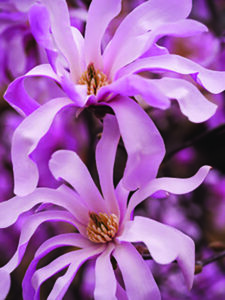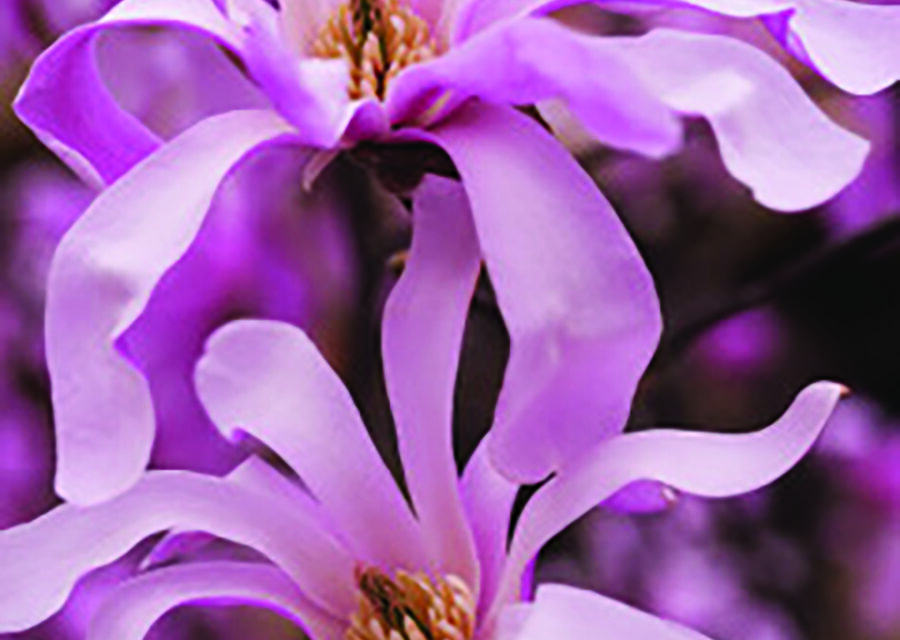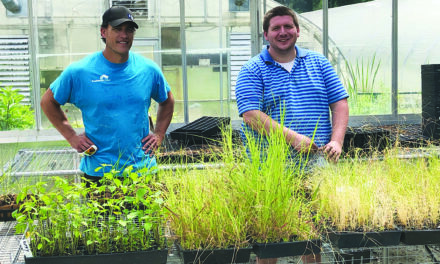
For a small space, consider the Magnolia stellata or Star Magnolia species, whose varieties fall under a small tree or shrub.
When we think of magnolias, our minds often drift off to a warm summer evening with their sweet, soft scent sitting in the air and their crisp white flowers seeming to illuminate under the sun going down.
Maybe our imagination drifts to the south, sipping on some sweet tea.
No need for your mind to drift all that far, though, as most magnolias can delight your senses in the spring, right here in Hardiness Zone 7, while you are sipping on your iced coffee instead.
The first signs of spring often get credited to daffodils and dogwoods, but if you really want a first flower show-stopper, an early blooming magnolia may be just the addition.
Magnolias have been around for more than 100 million years — so long, that there have even been fossils found, deeming magnolia the first flowering plant.
These days, there are many species and hybrids on the market, offering a range of choices, whether you’d like a smaller sized shrub to accent what you already have in your garden, or have the room and sun for a tall and wide statement tree.
You can also pick from hybrids offering yellows, deep pinks and purples with blooms that range from petite to frisbee sized.
You’ll be sure to have the neighbors driving by slower to take in the beauty, so make sure the kids are behaving when they are playing outside.
For a small space, consider the Magnolia stellata or Star Magnolia species, whose varieties fall under a small tree or shrub.
They do not feature the typical cupped or “tulip shaped” blooms, but instead have more of a fluffy star shape with thinner and longer petals.
Of all the magnolia species, they are the earliest to bloom.
One of the smallest Star varieties is the dark purple flowered Jane, which typically reaches 5-8 feet tall with a show-stopping 8-inch bloom.
Meanwhile, the white and light pink Centennial is one of the taller varieties in the bunch at a height of 25 feet and blooms as large as five inches.
In Maryland, several varieties in the Star Magnolia family will even produce a second round of blooms in the summer.
Another hybrid to take a look at is the Magnolia x soulangea, or “Saucer” magnolia family.
With 10-inch blooms, these show stoppers also start to flower in early spring.
Many of the varieties also have a manageable size of a height peak and spread of 15 to 20 feet.
A few varieties can even be kept in containers.
Saucer magnolias have all the pink hues, from light pink to hot pink to pinky-purple and are often bi-color as they bloom.
The most popular variety that you’ve probably seen is the light pink Alba Superba.
Looking for an early blooming yellow beyond just daffodils?
The Butterflies or Elizabeth Saucer hybrids both offer cheerful and bright yellow blooms with a scent that is more lemon than sweet perfume.
A quirky variety is the Cucumber tree magnolia, whose blooms look like a cucumber before opening.
Quite hardy, they grow as far south as Georgia, all the way north to Canada, making them popular to meld into other hybrids.
Their fruit (for wildlife, not for you) starts green and then turns red and pink while the flowers are a creamy white or yellow.
For a bold and darker color, one of darkest hues you’ll find is that of the large flowered “Black Tulip” magnolia.
It has the tulip shape of a classic magnolia, but in a deep purpley-black color, with blooms about 6 inches in diameter.
They’ll be one of your first plants to show their color when spring rolls around.
As one of the first blooms on the scene, it will help attract early moving pollinators so you can achieve having more hummingbirds than your neighbors for once.
Most varieties will prefer a sunny spot with slightly acidic soil if you can make it happen, though some can settle for partial shade, if needed. Well-drained soil is also important.
Depending on the variety and growing conditions, with proper care, they can grow as much as two feet per year.
After their blooming season, you’ll still be left with some interest in your garden.
Some magnolias are evergreen while others are deciduous.
Deciduous varieties are still loved for their look as they feature silvery limbs to add depth to your garden even after blooming season.
Perhaps most important in selection is to research the size of the variety you pick before planting to make sure you leave space for your new friend to reach full potential.
You may also consider splurging on a tree that is a few years old, as some trees can take as long as five years to flower.
A tree that’s had a head start also has a better chance of warding off damage from late frosts.
Have a magnolia already growing and thriving in your yard, but not sure of it’s type?
The easiest way to identify it is by looking at the shape of the petals and flower form as each species varies quite distinctly.
From there, consider the size and coloring to narrow it down further.
No matter the variety you choose, your magnolia is sure to be a lovely addition to your landscape.






